Complete Guide to Fort Pulaski National Monument in Georgia, including things to do, history, nearby lodging and camping, directions, and so much more.
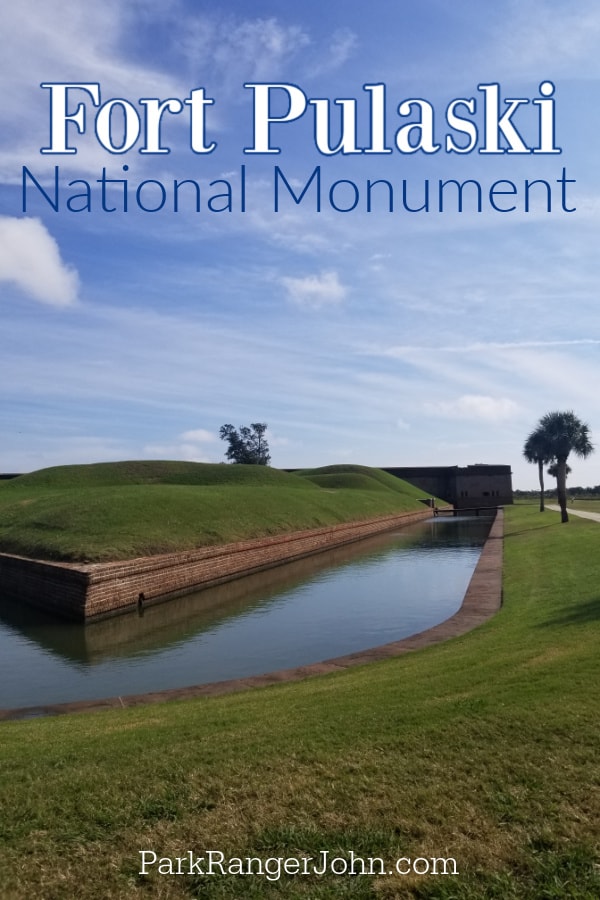
Fort Pulaski National Monument
Fort Pulaski was a coastal defense fort located in Coastal Georgia for the United States. Named after the Polish-born officer Kazimierz Pulaski, who fought in the American Revolutionary War under George Washington, the fort is located in Chatham County on Cockspur Island, at the mouth of the Savannah River, which forms the border between the states of Georgia and South Carolina.
The fort has been designated as a national monument since 1924 and is under the administration of the National Park Service. It was added to the National Register of Historic Places (U.S. National Park Service) on October 15, 1966.
About Fort Pulaski National Monument
As part of the necessary defense measures with regard to the impact of the British-American War of 1812, the US Federal Government chose to protect the important ports and coastal areas of the country through permanent fortifications against enemy attacks. It was therefore decided to build a fort at the mouth of the Savannah River, which was to close the estuary and the port of Savannah.
Construction began in 1829, first under the leadership of Major Babcock, then later under Lt. Robert E. Lee, a graduate of the United States Military Academy at West Point. Because of the marshy ground, it was necessary to build the fort on stilts. The oak trees used for this purpose reached a length of up to about 23 meters.
After 18 years of construction, the fort was completed in 1847 and had devoured the enormous amount of one million dollars at the time. In 1833, during the construction phase, it was decided to give the fort the name Fort Pulaski.
The fort is surrounded by a 16 meter wide and about 2.5 meters deep, wet ditch (moat). The ramparts reach a height of about ten meters with a total length of 526 meters.
After further development, the governor of Georgia at that time, Joseph E. Brown reclaimed the fortress for his state. Unauthorized, he deployed a 110-man commando from the Georgia Army National Guard on a steamer march. This detachment held the fort for the state of Georgia until February 1861, when the Georgia Army National Guard was replaced by regular troops of the Confederate Army.
In December 1861, the Confederate Army decided to give up Tybee Island, south of Cockspur Island, because of its isolated and ill-served location.
On the morning of April 10, 1862, the fort was demanded to be handed over to avoid unnecessary human losses. Colonel Charles H. Olmstead rejected this request.
At about 10 o'clock in the morning, the Northern States troops opened fire with 36 guns against the right flank of the fort.
For the first time, they also used James Rifled Cannons and Parrott rifles. After a continuous fire of 30 hours, a breach was made in the southwest corner of the fort, leaving the main powder magazine in the immediate firing range. The commander then hoisted the white flag.
Within six weeks of the capture, the Northern States had repaired the fort and used it for their own purposes, meaning that the port of Savannah could no longer be hit by blockade raiders, causing a serious setback for the Southern states.
At the beginning of the 20th century, the building began to show signs of deterioration. To counter this, President Calvin Coolidge, on 15 October 1924, proclaimed Fort Pulaski as a National Monument. On August 10, 1933, responsibility passed from the War Department to the National Park Service, which immediately began restoration work with members of the Civilian Conservation Corps.
At the beginning of the Second World War, the fort was closed to the public and used by the US Navy as a base. After the end of the war, the fort returned to the National Park Administration and was incorporated into the National Register of Historic Places on October 15, 1966.
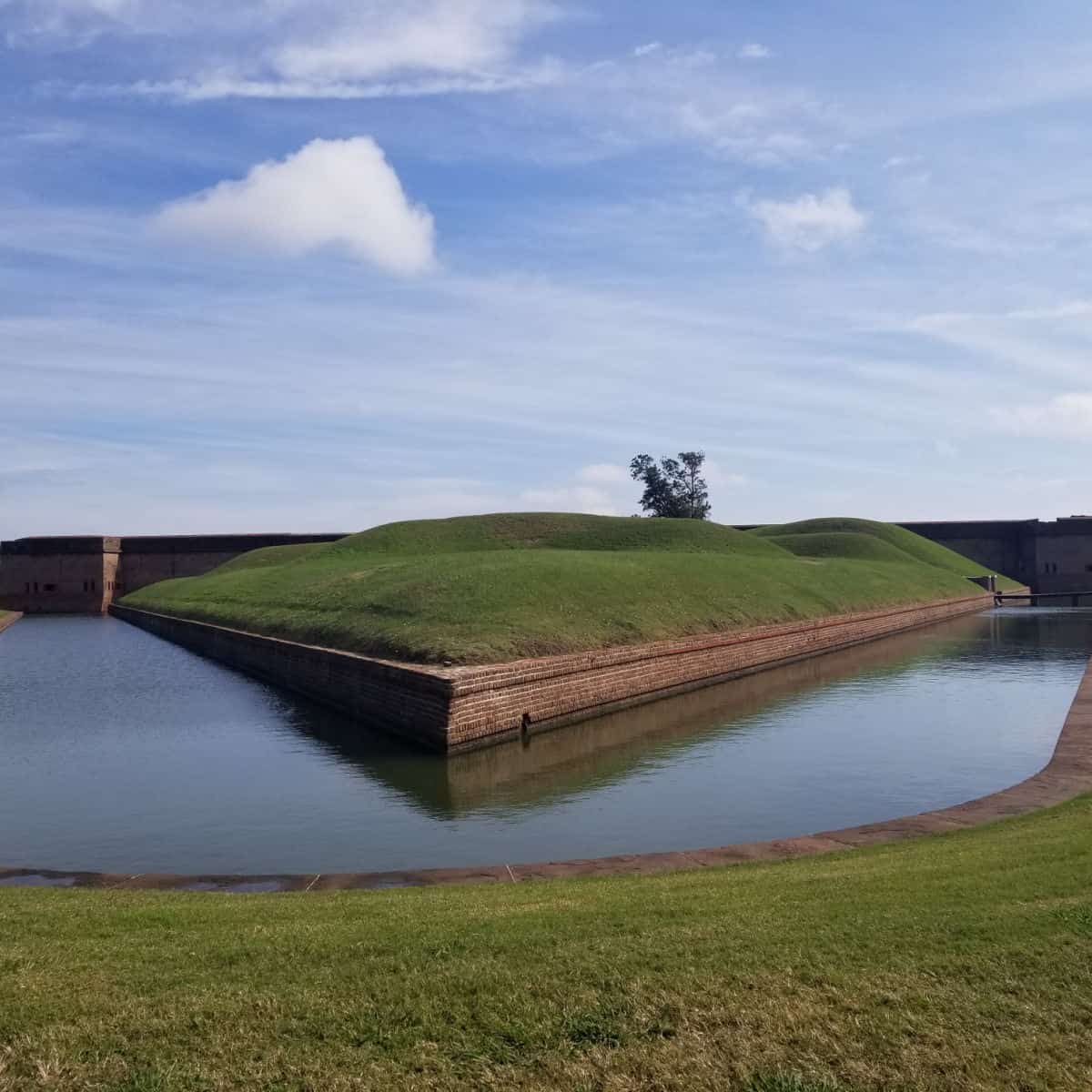
Is Fort Pulaski National Monument worth visiting?
If you're fascinated by military history and architecture, the fort's well-preserved ramparts, gun rooms, and other structures offer a unique opportunity to explore a 19th-century coastal defense fortification.
Alternatively, if you're a nature lover, the park's marshes, beaches, and hiking trails provide a beautiful backdrop for outdoor recreation and wildlife viewing. With its location near the charming city of Savannah, the park is also conveniently situated for those interested in exploring the region's culture and cuisine.
Whether you are history buffs, nature lovers, or park geeks this park has something for you!
History of Fort Pulaski National Monument
Fort Pulaski National Monument is an impressive example of Civil War era military fortifications. Fort Pulaski National Monument is the site of an American Civil War battle, The Battle for Fort Pulaski. The battle was took place on April 10-11, 1862, and marked the end of a 112-day Union siege of the fort.
After 112 days, Fort Pulaski came under attack by Union forces led by General Quincy A. Gillmore. Fort Pulaski was under the command of Colonel Charles H. Olmstead. The Battle for Fort Pulaski was a Union victory.
Fort Pulaski National Monument preserves the site where old technology proved no match for the latest Union developments in military weapons. The brick walls of Fort Pulaski were believed to be impenetrable to artillery fire until the Union's rifled artillery broke through the outer defensive walls.
Before the Siege
Built-in years between 1829 and 1847, Fort Pulaski became a Confederate stronghold when the American Civil War broke out in 1861. The fort on Cockspur Island, which lies on the Savannah River, was built to ensure the safety of Savannah, Georgia. Fort Pulaski was under the command of Col. Charles H. Olmstead and housed some 385 men.
Union President Abraham Lincoln had ordered a blockade of all Confederate ports when war broke out. The goal was to weaken the Confederate economy by limiting the Confederate's ability to trade. The only way the Union could reach the port of Savanah was to pass the seemingly indestructible and armed Confederate Fort Pulaski.
The Union attempted to go around the fort, but the tributaries of the Savannah River were too shallow. Unable to reach the port by any other means, the Union set its sights on Tybee Island. The Confederates had abandoned the island opposite Fort Pulaski in December 1861.
The Siege of Fort Pulaski
Abandoning Tybee Island proved to be a mistake. The island was the perfect place for the Union to stop all access and communications to and from Fort Pulaski. The Union fortified Tybee island, arming its beaches with cannons.
In February 1862, a Confederate supply ship making its way down the Savannah River to resupply Fort Pulaski came under attack. The Union had hidden cannons at Venus Point and began shelling the ship. The Union attack of the Confederate supply ship, Ida, began a 112-day siege of Fort Pulaski.
Captain Quincy A. Gillmore was in charge of the Union forces on Tybee Island. During the siege of Fort Pulaski, Gillmore prepared to take the fort by force, setting up eleven batteries along the northeast side of Tybee Island. These batteries, were fitted with siege guns and newly developed heavy artillery guns.
The Battle of Fort Pulaski
The Union was ready to attack Fort Pulaski by April. Armed with newly developed weapons, they believed they would be able to take the seemingly indestructible brick fortress. The Confederates occupying Fort Pulaski had been preparing for an attack. They had dug trenches and set traps in the parade ground.
On April 10th, 1862, Gillmore made his move. The Confederate General Olmstead awoke to the sight of the batteries on Tybee island aimed at Fort Pulaski. Gillmore gave Olmstead the chance to surrender the fort, which Olmstead refused. The Confederates still believed that the Union shells would do little to compromise the integrity of the fort, but braced for battle nonetheless.
The Union began their bombardment of Fort Pulaski. They began by shelling the fort's gun positions. Once the Confederate guns were out of the way, the Union turned their attention to reducing the fort's walls. The bombardment of the fort's walls was done using the new rifled artillery guns. Fire from rifled artillery guns concentrated on the southeast corner and eastern walls of the fort.
Fort Pulaski Falls to the Union
The Union bombardment of Fort Pulaski continued sporadically into the night of April 10th, resuming fully on April 11th. The Confederate Gen. Olmstead refused to surrender even though the rifled artillery guns had successfully breached the southeast corner of the fort.
Only after a shell nearly exploded the fort's armory did Gen. Olmstead admit that the fort could no longer be held. The Confederate flag was lowered at Fort Pulaski on the afternoon of April 11th, 1862. Fort Pulaski would remain in Union hands for the rest of the war.
The Union victory, commemorated by the Fort Pulaski National Monument, closed the port of Savanah to the Confederates. Although Savannah itself remained in Confederate hands until General William T. Sherman’s Atlanta Campaign. The fall of Fort Pulaski due to the rifled artillery guns changed military tactics and made brick forts obsolete.
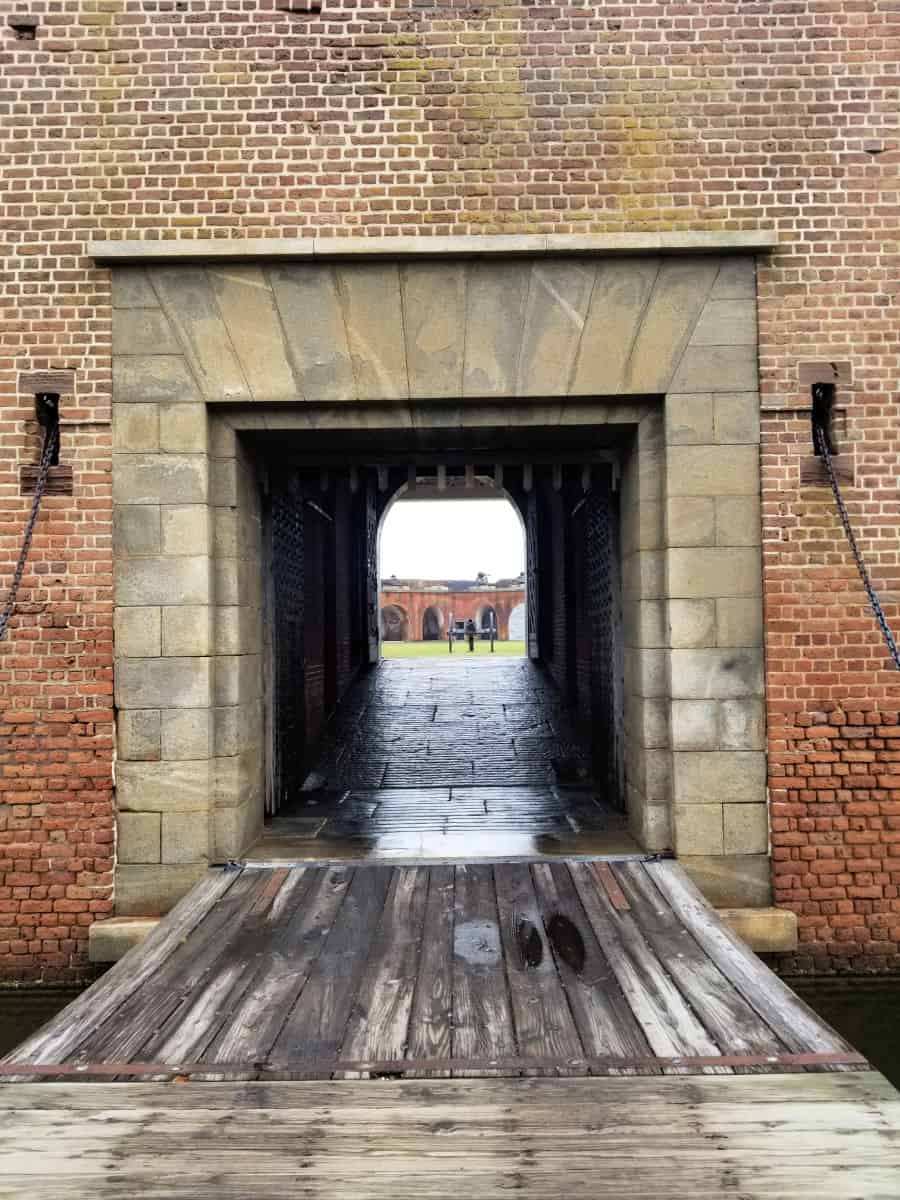
Things to know before your visit to Fort Pulaski National Monument
Entrance fee
Fort Pulaski Entrance Fee - Per Person (16 years and older) - $10.00
Admission fee per person aged 16 years and older, valid for 7 consecutive days. Credit or Debit Cards Only. Digital passes can be purchased here.
Fort Pulaski Entrance Fee - Per Person (15 years and younger) - $0.00
Admission fee per person aged 15 years and younger, good for 7 days.
Learn more about National Park Passes for parks that have an entrance fee.
$80.00 - For the America the Beautiful/National Park Pass. The pass covers entrance fees to all US National Park Sites and over 2,000 Federal Recreation Fee Sites for an entire year and covers everyone in the car for per-vehicle sites and up to 4 adults for per-person sites.

Buy your pass at this link, and REI will donate 10% of pass proceeds to the National Forest Foundation, National Park Foundation, and the U.S. Endowment for Forestry & Communities.
National Park Free Entrance Days -Mark your calendars with the five free entrance days the National Park Service offers annually.
Time Zone
Eastern Time Zone
Pets
While your pet is welcome in the monument, pets are not allowed in public buildings. Pets must be restrained on a leash no longer than 6 feet long and may not be left unattended.
Cell Service
The park area generally has cell service. Cell service can be spotty in the Fort Pulaski's trails and inside the walls depending on the carrier.
Park Hours
The park is open year round from 9:00 AM to 5:00 PM, except for New Years, Thanksgiving, and Christmas Days.
Wi-Fi
There is no public Wi-Fi available in the park
Insect Repellent
Insect repellent is always a great idea when outdoors, especially if you are around any body of water.
We use Permethrin Spray on our clothes before our park trips.
Water Bottle
Make sure to bring your own water bottle and plenty of water with you. Plastic water bottles are not sold in the park.
Parking
The parking lot is located near the entrance to the monument and the visitor center.
Food/Restaurants
There are no restaurants within the park.
Gas
There are no gas stations within the park.
Drones
Drones are not permitted within National Park Sites.
National Park Passport Stamps
National Park Passport stamps can be found in the visitor center.
Fort Pulaski is part of the 2007 Passport Stamp Set.
Make sure to follow Park Ranger John on Facebook, Instagram, Pinterest, and TikTok
Electric Vehicle Charging
There are 17 electric vehicle charging stations in Savannah.
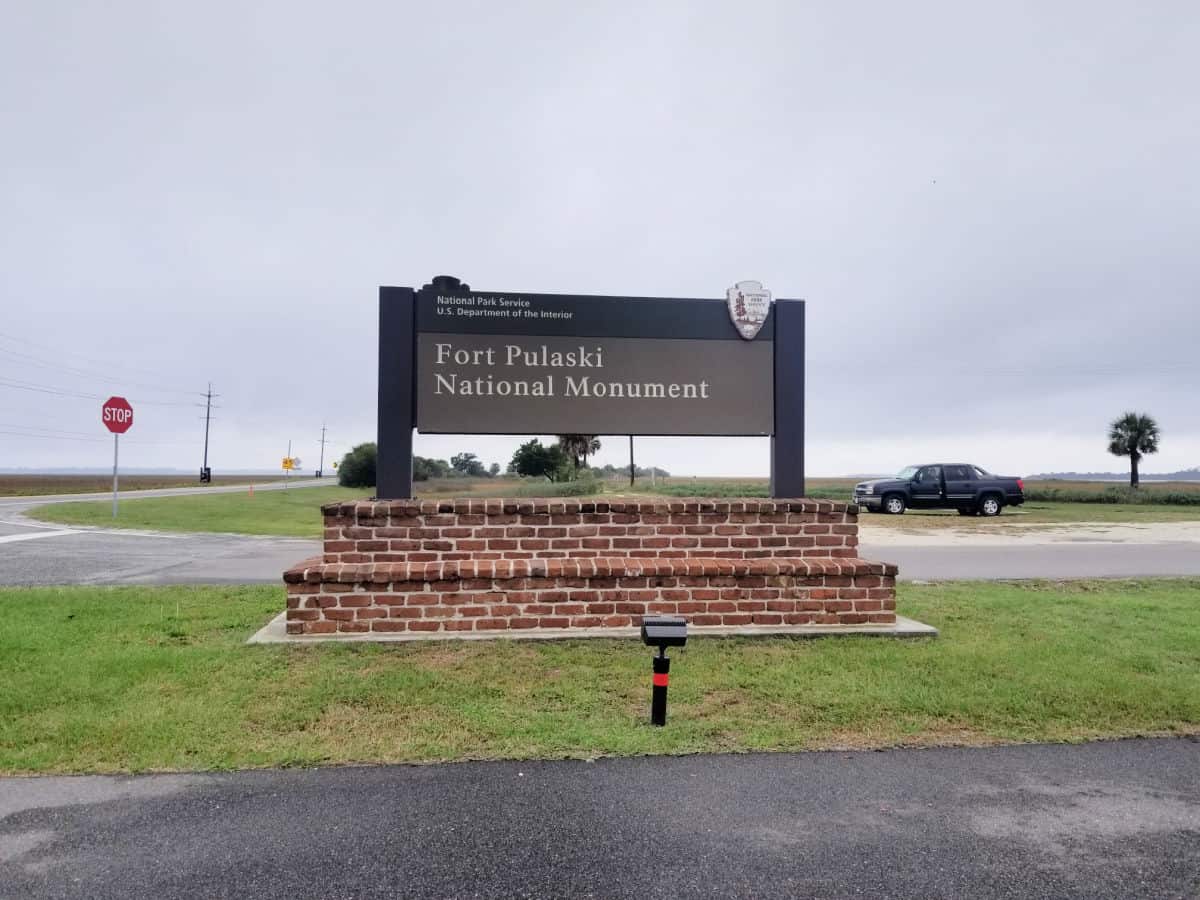
Details about Fort Pulaski National Monument
Size - 5,623 acres
Check out how the park compares to other National Parks by Size.
Date Established
October 15, 1924
Visitation
In 2022, Fort Pulaski NM had 471,077 park visitors.
In 2021, Fort Pulaski NM had 419,480 park visitors.
In 2020, Fort Pulaski NM had 357,970 park visitors.
In 2019, Fort Pulaski NM had 374,290 park visitors.
Learn more about the most visited and least visited National Parks in the US
National Park Address
U.S. Highway 80
Savannah, GA 31410
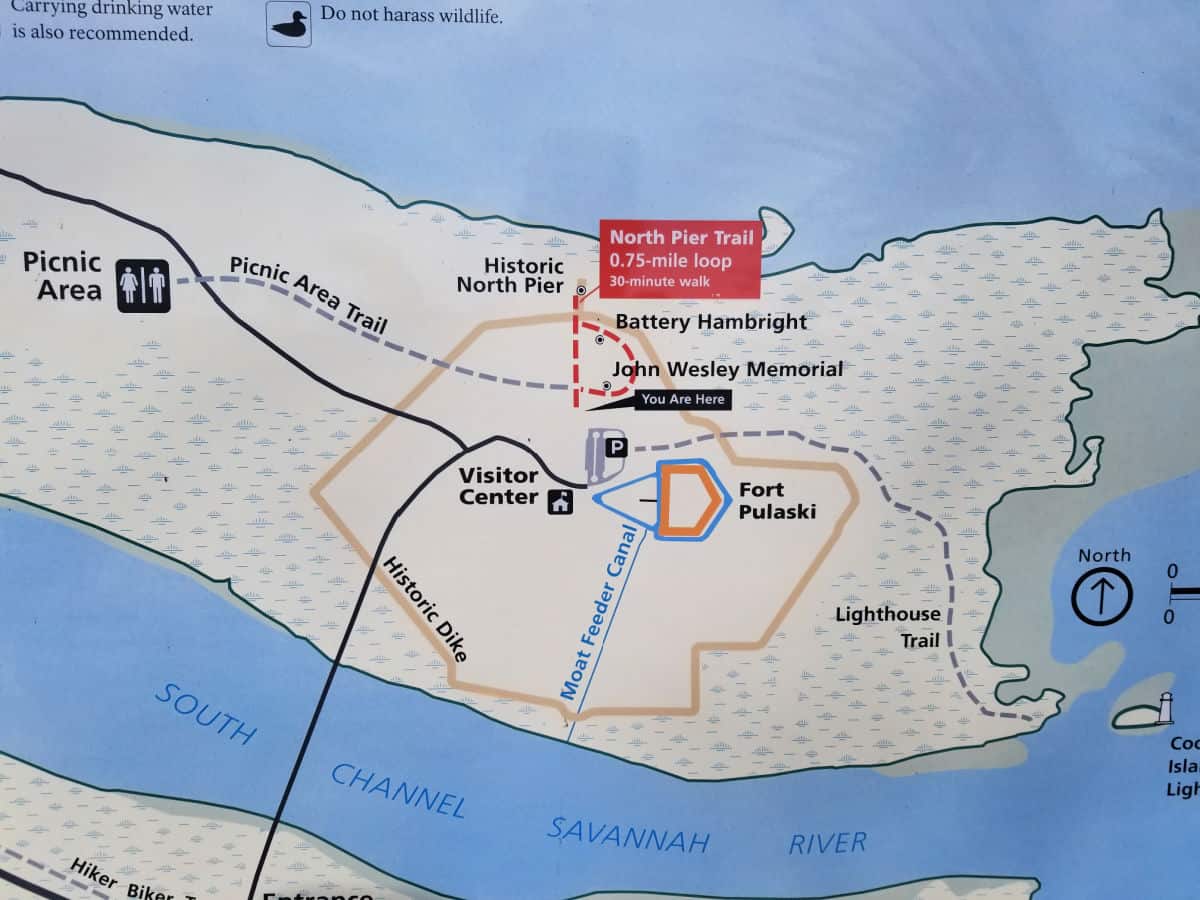
Where is Fort Pulaski National Monument?
Fort Pulaski National Monument is located on Cockspur Island, near Savannah, Georgia, in the southeastern United States.
Estimated distance from major cities nearby
- Jacksonville, FL - 125 miles
- Charlotte, NC - 218 miles
- Atlanta, GA - 225 miles
- Greensboro, NC - 286 miles
- Tampa, FL - 297 miles
- Durham, NC - 299 miles
- Chesapeake, VA - 429 miles
Estimated Distance from nearby National Park
Congaree National Park - 170 miles
Great Smoky Mountains National Park - 350 miles
New River Gorge National Park - 480 miles
Mammoth Cave National Park - 591 miles
Hot Springs National Park - 838 miles
Shenandoah National Park - 509 miles
Where is the National Park Visitor Center?
The National Park Visitor Center at Fort Pulaski National Monument is located near the entrance to the park, on Cockspur Island, Georgia.
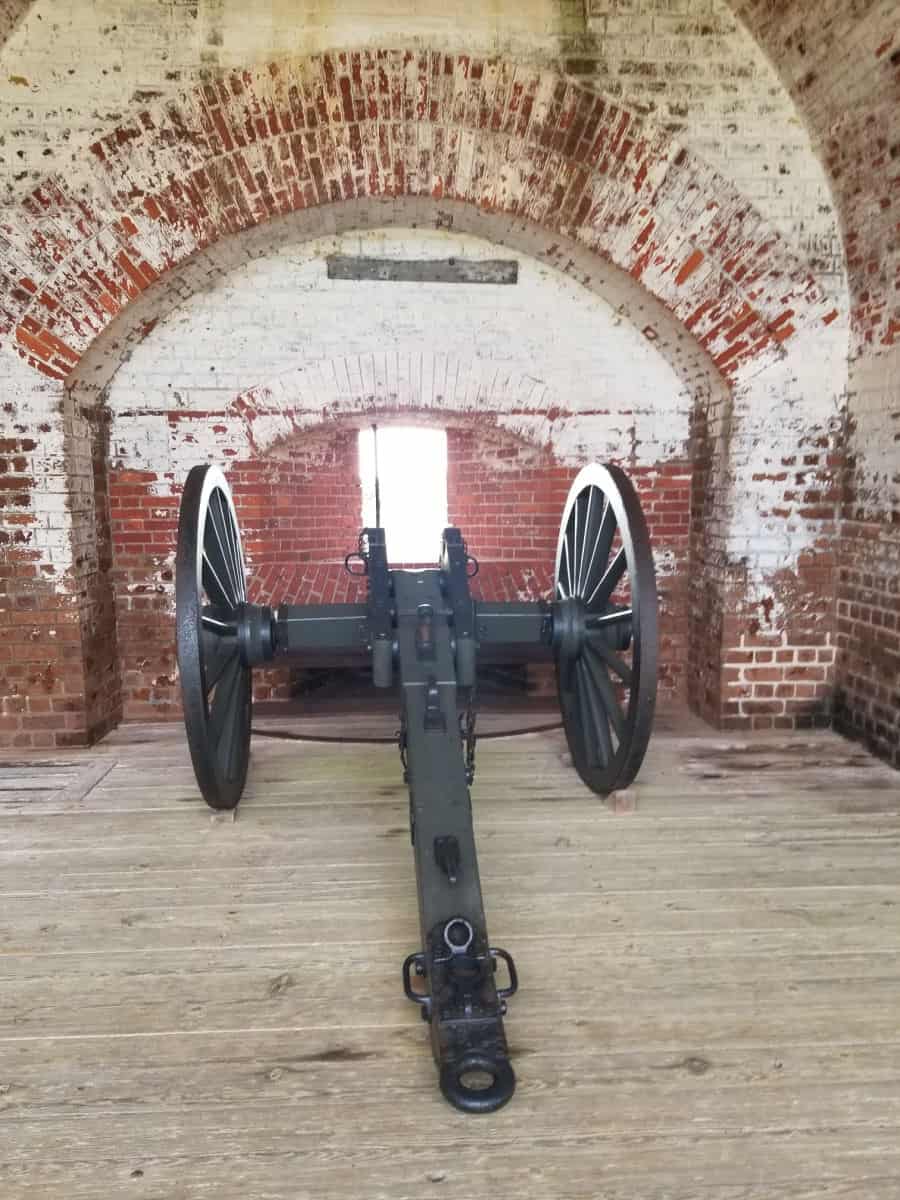
Getting to Fort Pulaski National Monument
Closest Airports
- Savannah/Hilton Head International Airport (SAV / KSAV)
- Hilton Head Airport (HHH / KHXD)
International Airports
- Charleston International Airport (CHS / KCHS)
- Jacksonville International Airport (JAX / KJAX)
- Myrtle Beach International Airport (MYR / KMYR)
- Daytona Beach International Airport (DAB / KDAB)
- Hartsfield-Jackson Atlanta International Airport (ATL / KATL)
Driving Directions
From Interstate I-95, take Exit 99 onto Interstate I-16 East (James L Gillis Memorial Hwy) for 7 miles. Take Exit 164A onto Interstate I-516 East toward US-80 East. Take Exit 3 (US-17 S/US-80 E) toward US-80 East. Turn left onto Ocean Highway, Ogeechee Rd (US-17 N, US-80 East). Bear right onto West Victory Drive (US-80 East). Continue on US-80 East for 13 miles.
Fort Pulaski National Monument entrance will be on the left hand side of US-80; the entrance is just after a turn in the highway.
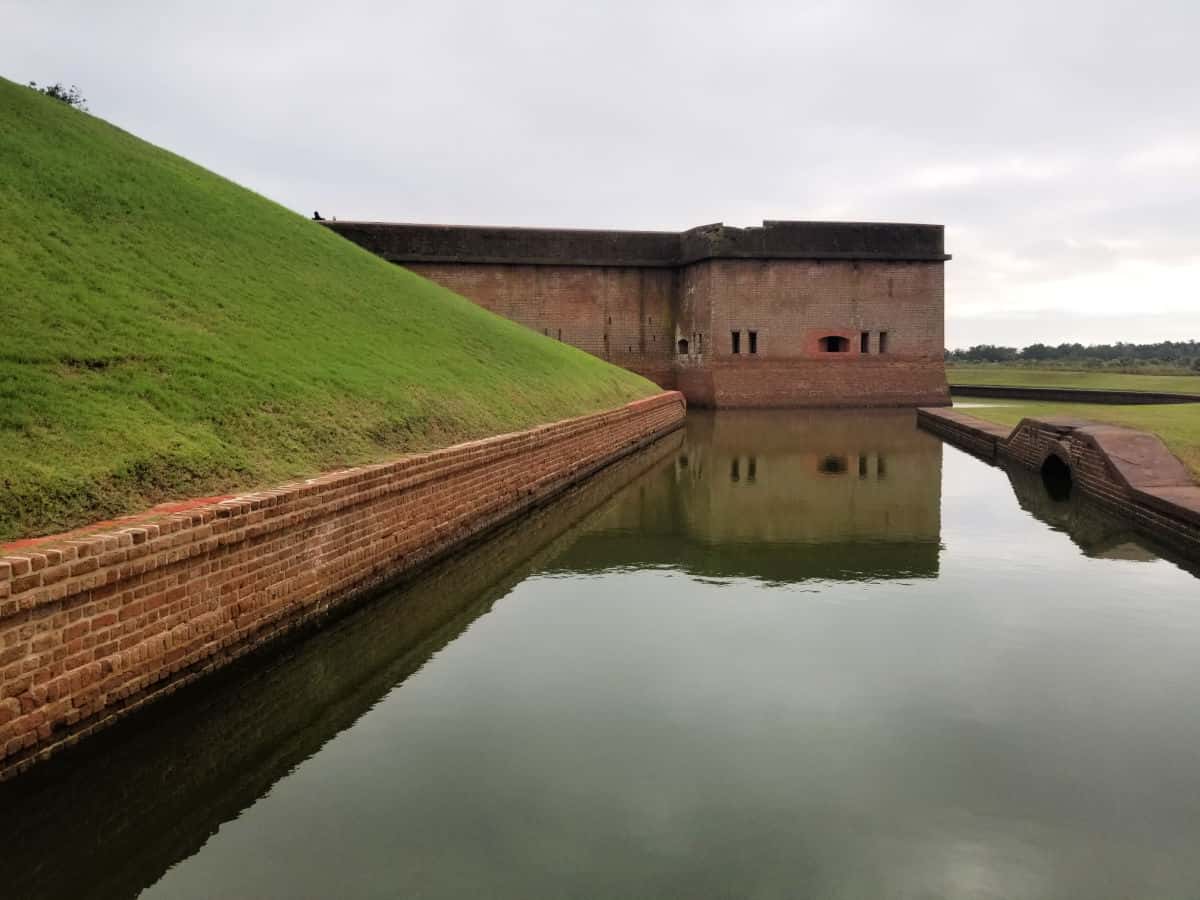
Best time to visit Fort Pulaski National Monument
Fort Pulaski National Monument offers a unique and rewarding experience throughout the year, but the best time to visit is during the spring and fall months when temperatures are milder and the weather is ideal for outdoor exploration.
Weather and Seasons
Savannah has a humid sub tropical climate with over two hundred days of sunshine each year.
The hottest weather is from May 26th to September 16th, with an average daily high temperature above 85 degrees.
The coldest weather is from November 30th to February 28th, with an average daily high temperature below 67 degrees.
January is the coldest month, with an average low of 42 degrees and high of 61 degrees.
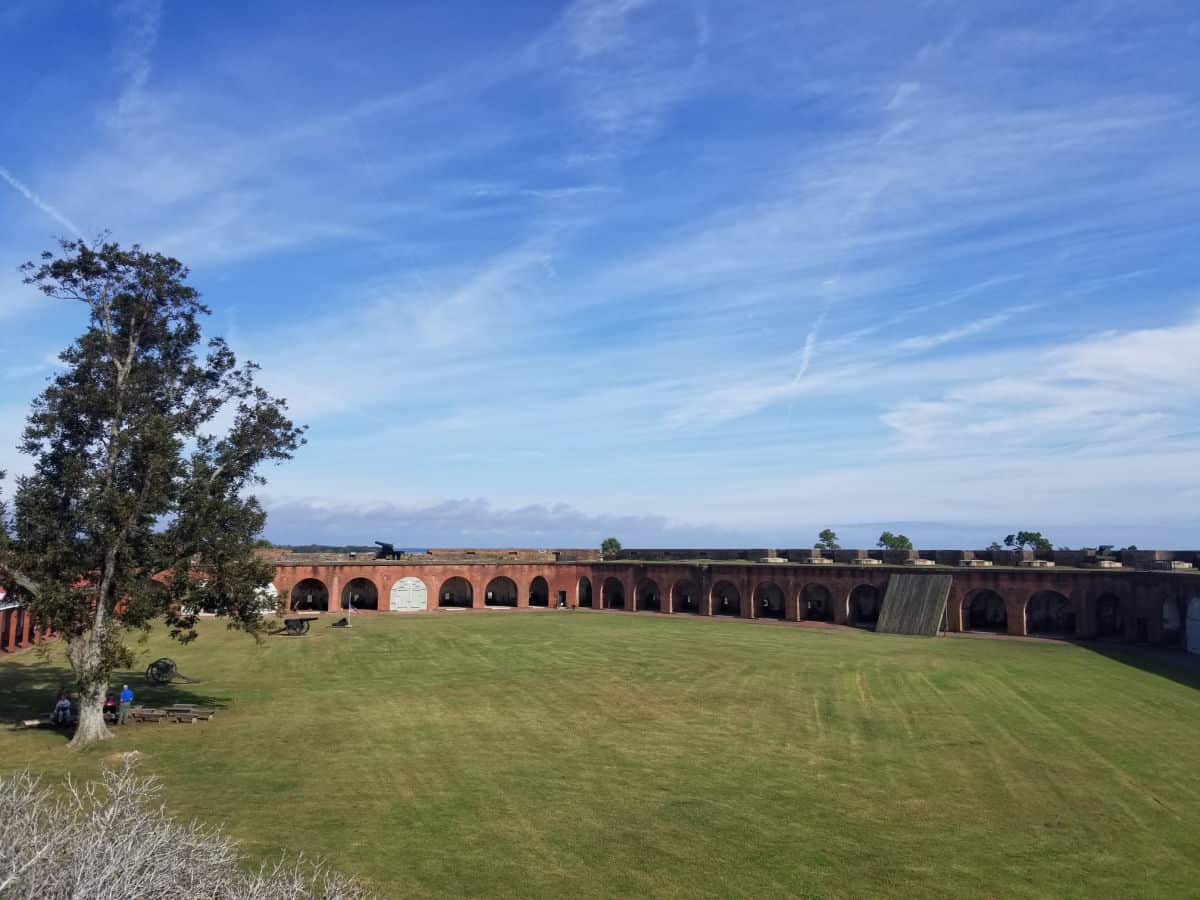
Best Things to do in Fort Pulaski National Monument
We suggest planning at minimum a half of day to explore Fort Pulaski NM. If you plan to enjoy one of the amazing hiking trails make sure to plan more time.
That being said you could easily spend an entire day wandering around the visitor center, fort, and surrounding area.
I had so much fun exploring the Fort and checking out the epic views from the top. The park is just one of the amazing Historic Sites in Savannah.
Visitor Center
The Fort Pulaski Visitor Center is the perfect place to start your visit to this great park. There are exhibits on General David Hunter and Robert E. Lee, the construction of Fort Pulaski and the significance of the battle for Fort Pulaski in April 1862.
You can also check with the volunteers or Park Rangers if you have any questions about the park.
Park Movie
The Battle for Fort Pulaski a 20-minute film highlights the history of Fort Pulaski from its early construction to the later struggle for its control during the Civil War.
Film shows on the hour and half-hour from 9:30 AM to 4:30 PM daily.
Junior Ranger Program
The Fort Pulaski Junior Ranger Program is a fantastic way to learn more about the fort and the history of the area.
Fishing
Fishing is allowed along the banks of the Savannah River on and around Cockspur Island, including the use of the Cockspur Island Bridge after hours. You must possess a valid fishing license issued by the State of Georgia
Ranger Programs
Volunteer or Ranger-led tours are a great way to learn more about the park. Check with the visitor center for current program offerings.
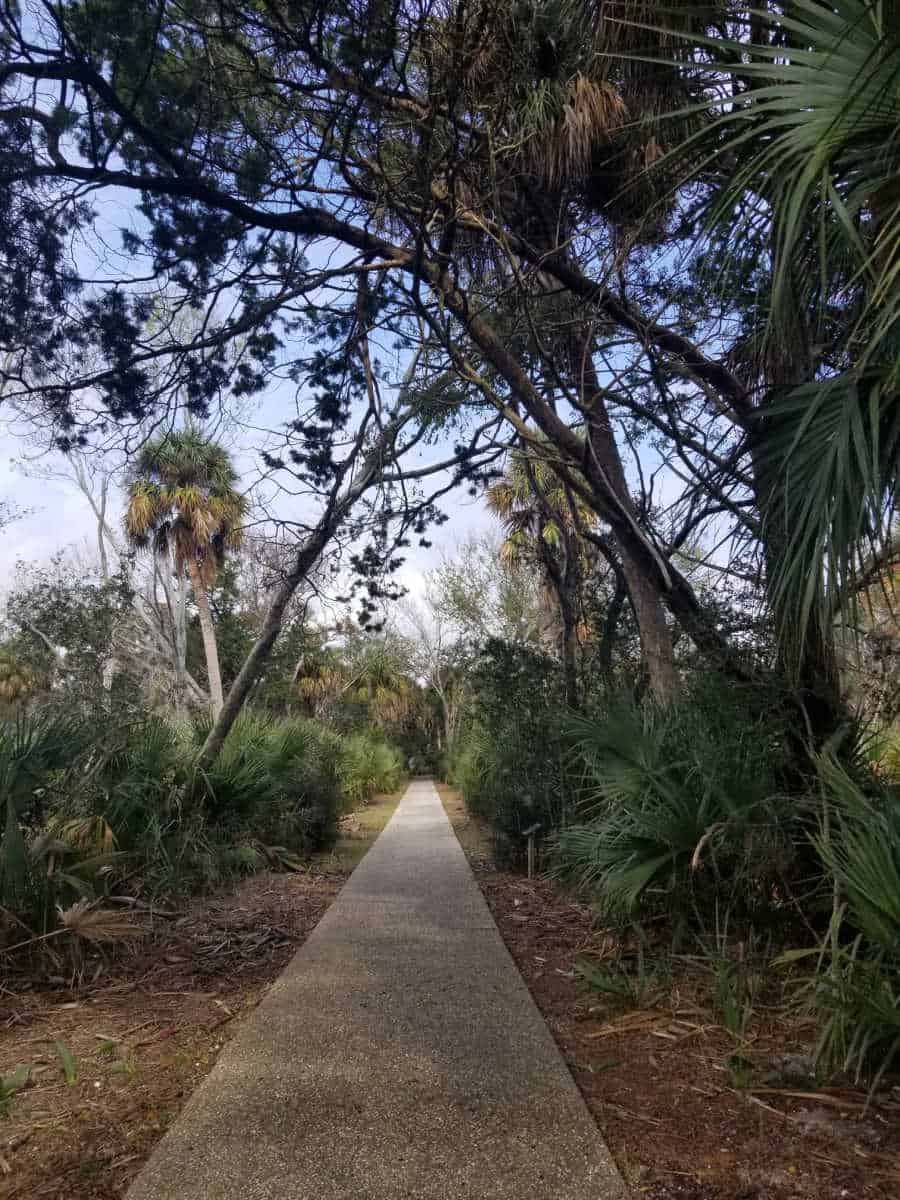
Hiking in Fort Pulaski National Monument
Always carry the 10 essentials for outdoor survival when exploring.
Explore one of the seven trails that surround Fort Pulaski NM! You can even earn a Fort Pulaski National Monument Trail Adventures Certificate for hiking all of the trails.
Make sure you know the weather and plan accordingly. Bring sunscreen, insect repellent, a hat, sunglasses, and a water bottle with you on the trail.
The Nature Trails are a great area to look for white-tailed deer, American Alligator, and more! The park is home to 11 protected species including the American oystercatcher, bald eagle, gull-billed tern, least tern, loggerhead sea turtle, manatee, peregrine falcon, piping plover, swallow-tailed kite, Wilson's plover and woodstork.
North Pier Trail
- Distance- .25 Miles
- Trailhead - This trail leaves from the visitor center and walks along the sidewalk that borders the parking area.
This short trail guides you past remnants of Fort Pulaski's original construction village, Battery Hambright, built in the late 19th Century, and the historic north pier.
From the North Pier you can see Turtle Island, Daufuskie Island, Hilton Head, and the Atlantic Ocean.
Fort Perimeter Trail
- Distance- .50 Miles
Start at the visitor center and walk around the perimeter of the fort. Check out the damaged walls of Fort Pulaski including several shells still in the walls from the April 1862 battle.
Lighthouse Overlook Trail
- Distance - .75 miles
This trail takes you along open marsh areas with views of views of the Savannah River, and Tybee Island. This trail offers the best opportunity to view the historic Cockspur Island Lighthouse.
Picnic Area Trail
- Distance- 1.1 mile trail
This trail starts at the visitor center and guides you through the woods to a great picnic area.
Historic Dike Trail
- Distance - 2.1 miles
The Historic Dike System was designed by Robert E. Lee. The dike system allowed for tide control to help with the building of Fort Pulaski.
McQueen's Island Rails to Trails
- Distance - 6 miles
This rails to trails starts at the entrance of Fort Pulaski. The trail follows the path of the old Tybee rail line that once connected Savannah to the beaches of Tybee Island
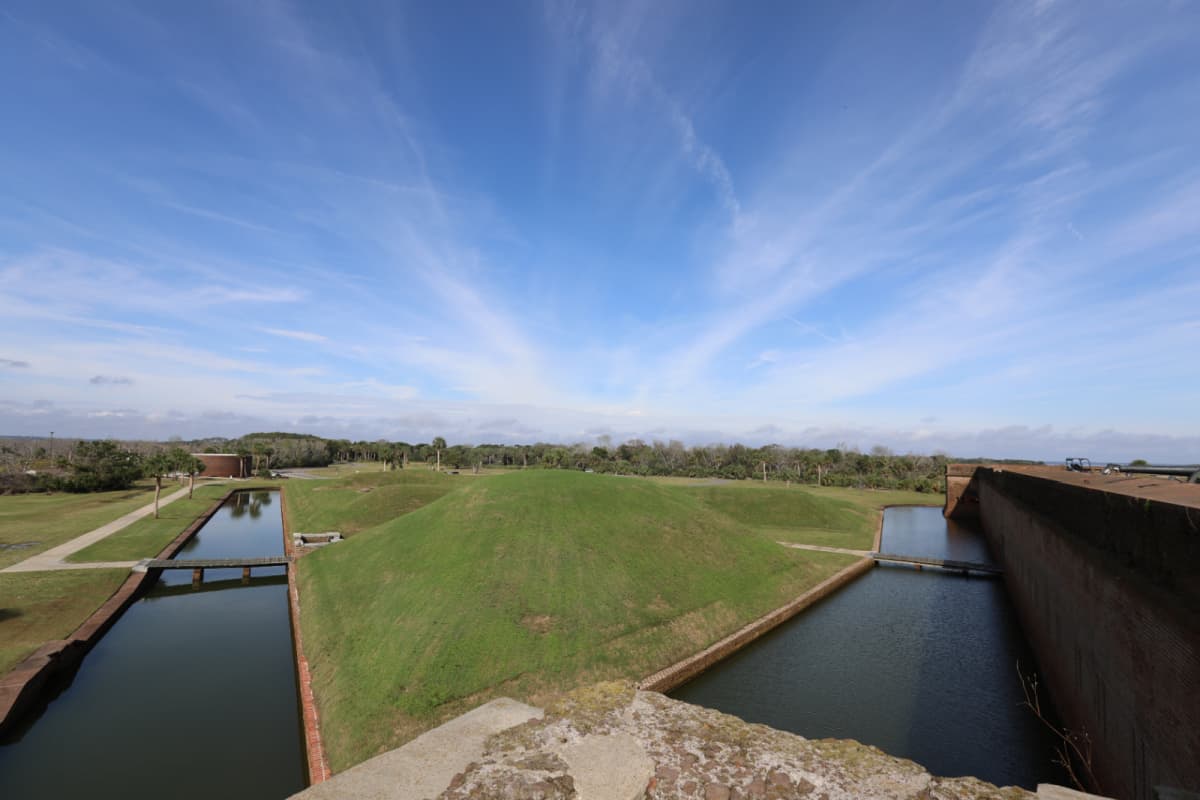
How to beat the crowds
We suggest arriving early in the day to avoid the big crowds. Visiting during the week is another great way to experience few people in the park.
Where to stay when visiting Fort Pulaski
There are no National Park Lodges within the park.
Nearby Lodging includes:
Desoto Beach Bed & Breakfast - 3.5-star bed & breakfast. At Desoto Beach Bed & Breakfast, you can look forward to free cooked-to-order breakfast, a terrace, and a garden. With a beachfront location, this bed & breakfast is the perfect place to soak up some sun. Guests can connect to free in-room WiFi.
Dunes Inn & Suites - Motel by the ocean. Near Tybee Island Beach, Dunes Inn & Suites provides everything you need. Stay connected with free in-room WiFi.
Sandcastle Inn - Sandcastle Inn is located close to Tybee Island Beach, and has plenty to offer. Stay connected with free in-room WiFi.
Admiral's Inn on Tybee Island - Admiral's Inn on Tybee Island provides a 24-hour business center and more. Guests can connect to free in-room WiFi.
Atlantis Inn - Located close to Tybee Island Marine Science Center and Tybee Island Beach, Atlantis Inn provides a terrace. Guests can connect to free in-room WiFi.
Click on the map below to see current vacation rentals and lodges near the park.
Camping
There are no National Park Campgrounds within the park.

For a fun adventure check out Escape Campervans. These campervans have built in beds, kitchen area with refrigerators, and more. You can have them fully set up with kitchen supplies, bedding, and other fun extras. They are painted with epic designs you can't miss!
Escape Campervans has offices in Vancouver, Seattle, Portland, San Francisco, Las Vegas, Los Angeles, Phoenix, Salt Lake City, Denver, New York, and Orlando
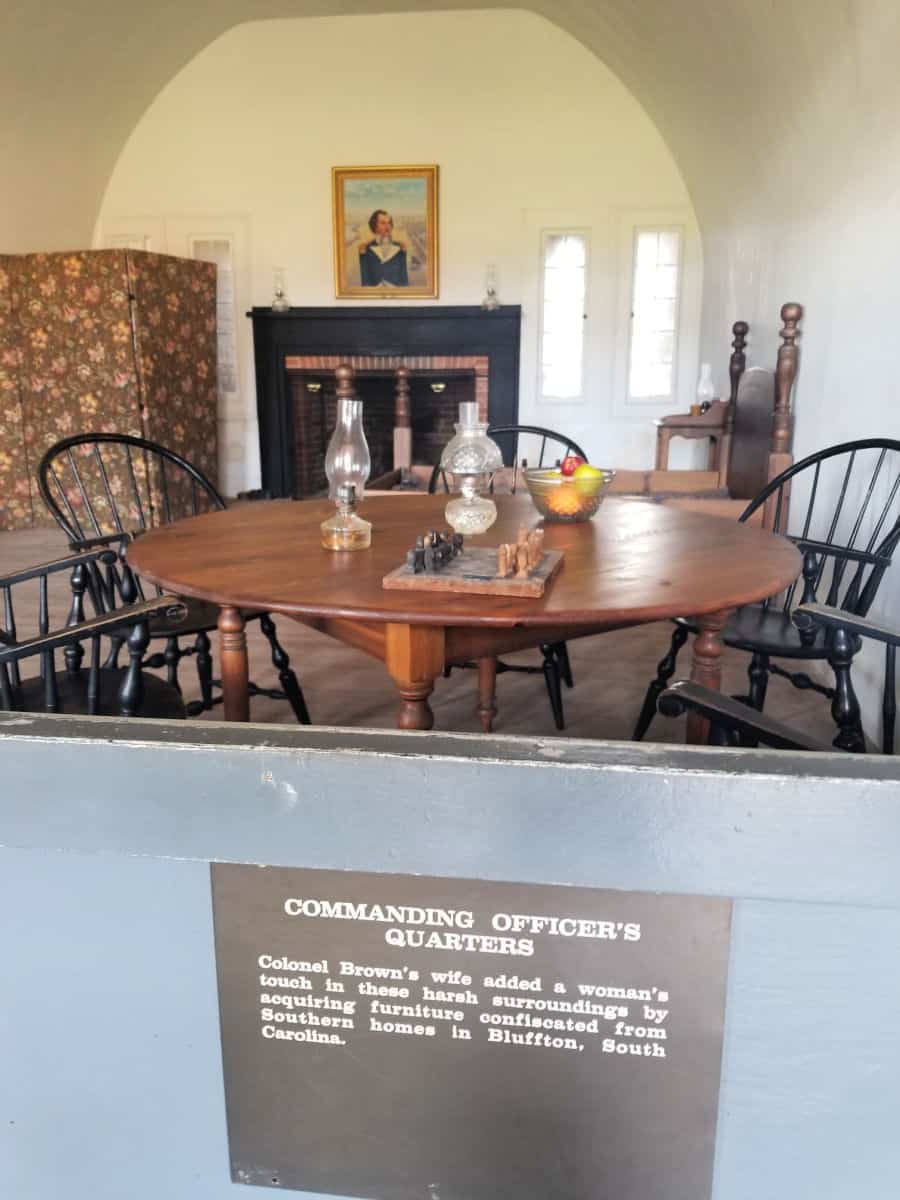
Fun Facts about Fort Pulaski
- It took 18 years to build Fort Pulaski from 1829 to 1847
- 25 million bricks were used to construct the fort
- "Savannah Grey" bricks locally made in Savannah were used along with bricks from Maryland and Virginia.
- It cost nearly $1 million dollars to construct the fort for the US Government.
- Second Lt. Robert E Lee was in charge of planning during early construction.
- The moat averages 7 to 8 feet deep.
- The wall towers are 22 feet inside and 32 feet from outside the moat.
- The parade grounds stretch for 2 acres
- The walls of the fort average between 5 to 11 feet thick of solid brick.
- The State of Georgia claimed the fort before the Civil War.
- Confederate troops occupied Fort Pulaski from January, 1861 to April, 1862.
- On April 10th and 11th, 1862 the only battle at the fort occurred.
- Union troops occupied Fort Pulaski from April, 1862 until the end of the Civil War.
- Fort Pulaski was used as a military and political prison after 1862
- Union General David Hunter issued Gen. Order No. 7 freeing area slaves, predating Lincoln's Emancipation Proclamation.
- Fort Pulaski became a destination on the Underground Railroad for slaves searching for freedom.
Parks Near Fort Pulaski National Monument
Old Fort Jackson in Savannah - This is the closest Civil War Fortress to Savannah. Located 10 minutes from the historic district.
Reconstruction Era National Historical Park - 63 miles
Fort Frederica National Monument - 101 miles
Fort Sumter National Monument - 123 miles
Cumberland Island National Seashore - 128 miles
Charles Pinckney National Historic Site - 134 miles
Check out all of the National Parks in Georgia along with neighboring National Parks in Alabama, Florida National Parks, National Parks in North Carolina, South Carolina National Parks, and Tennessee National Parks
I know you are scratching your head wondering, "What's the best national parks near me?" Don't worry! We've got you! See our list of US National Park Sites
Don't worry there are so many cool things to do in Tybee Island you can easily spend days exploring!
Make sure to check out all of the epic things to do in Savannah while you are in the area.
Don't miss all of the great places to eat in Savannah during your visit.
Make sure to follow Park Ranger John on Facebook, Instagram, Pinterest, and TikTok





Leave a Reply